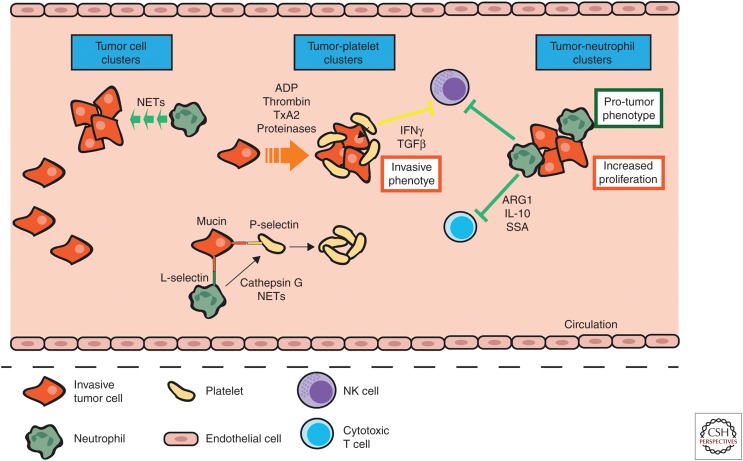Figure 2.
Myeloid cells protect tumor cells in the circulation. Circulating tumor cells have a higher chance of survival when in clusters. Neutrophil-derived neutrophil extracellular traps (NETs) induce tumor cell aggregation in the circulation and circulating tumor cells release various factors such as ADP, thrombin, TxA2, and proteinases to stimulate platelet–tumor cell aggregation. This tumor cell–platelet clustering induces an invasive phenotype in the tumor cells and the release of IFNγ and TGFβ from platelets, which then suppress antitumor NK cell responses. Additionally, neutrophils themselves cluster with circulating tumor cells and this induces a protumor phenotype in the neutrophils and increases tumor cell proliferation within these clusters. This protects the tumor cells against shear forces and immune-mediated destruction by cytotoxic T and NK cells via neutrophil release of ARG1, IL-10, and SSA. Tumor cells also engage L-selectin on neutrophils and P-selectin on platelets, which causes these cells to interact and neutrophils to release cathepsin G and NETs, which in turn activate platelets.

